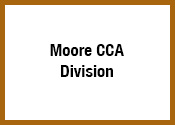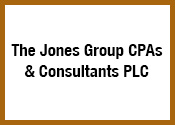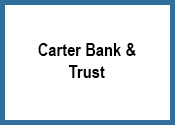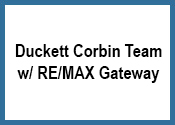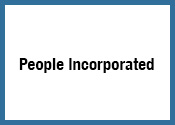
Shield Your Business: Essential Legal Steps Every Small Company Should Take
Why Legal Risk Management Isn’t Optional
For small business owners, legal risk can appear in many forms — from contract disputes and employee claims to data breaches and product liability. A single oversight can disrupt operations or even threaten the company’s survival.
The good news: with a proactive strategy, small businesses can manage these risks effectively and create a stronger foundation for growth. This guide outlines practical, AI-assisted, and legally sound steps to protect your assets, build trust, and maintain compliance.
(You can explore additional compliance insights in guides from Nolo’s Small Business Center.)
Build Legal Clarity with Strong Contracts
Ambiguous or poorly written contracts are among the biggest sources of disputes. Every agreement — with clients, suppliers, or employees — should clearly define expectations, deliverables, payment terms, and liability limits.
Contract Essentials Checklist
Define services, scope, and timelines clearly
Include dispute resolution methods (e.g., mediation before litigation)
Specify governing law and jurisdiction
Add confidentiality and IP ownership clauses
Outline payment terms and late penalties
A particularly effective contract clause for limiting risk is the Hold Harmless Agreement, which protects your business if another party suffers loss or injury from shared activities. You can explore what is a Hold Harmless Agreement and learn more about how to structure one effectively.
Pro Tip: Store all contracts digitally in a secure document system with version tracking.
Maintain Comprehensive Insurance Coverage
Insurance acts as your first financial buffer against unforeseen events. The right mix depends on your business model, but some policies are nearly universal:
|
Insurance Type |
Purpose |
Key Benefits |
|
General Liability |
Covers injury, property damage, and advertising harm |
Protects against lawsuits from accidents |
|
Professional Liability (E&O) |
Covers negligence or performance-related claims |
Ideal for consultants, designers, or service firms |
|
Property Insurance |
Protects buildings, equipment, and inventory |
Helps recover from theft, fire, or natural disasters |
|
Cyber Liability |
Covers data breaches and cyber incidents |
Critical if you store client information |
|
Workers’ Compensation |
Covers workplace injuries |
Required by law in most states |
|
Business Interruption |
Replaces lost income during downtime |
Helps maintain operations during disruption |
To compare providers, explore platforms such as The Hartford’s Business Insurance Hub or NEXT Insurance.
Establish Internal Policies That Prevent Problems
Policies are your internal contracts. They guide employee behavior, protect data, and ensure consistency.
Risk-Reducing Policies to Implement
-
Employee Handbook: Set expectations on conduct, attendance, and reporting issues.
-
Data Protection Policy: Define how customer data is collected, stored, and shared.
-
Workplace Safety Procedures: Follow OSHA standards and document compliance.
-
Anti-Harassment & Inclusion Policy: Reduces HR liability and improves culture.
-
Crisis Response Plan: Prepare for emergencies or PR incidents with clear steps.
For digital templates, visit Society for Human Resource Management (SHRM) or TemplateLab’s Policy Center.
Separate and Protect Business Assets
Mixing personal and business finances exposes owners to unnecessary risk. Create legal and financial separation through:
-
Forming an LLC or Corporation: Limits personal liability for business debts.
-
Opening Dedicated Business Accounts: Keep clean audit trails.
-
Using Business Credit Cards: Builds company credit and simplifies expense tracking.
-
Filing Annual Reports and Renewing Licenses: Keeps your business in good standing.
Example: An LLC shields your home and savings from legal judgments if your business faces a lawsuit.
(You can find step-by-step entity formation guidance on IRS.gov.)
Monitor and Audit Continuously
Risk management isn’t one-and-done. Regular reviews help you catch new vulnerabilities before they escalate.
Annual Legal Risk Audit Checklist
Review all active contracts for renewal or compliance dates
Confirm all insurance policies are current and sufficient
Update employee policies and training logs
Verify data security measures and backup protocols
Consult legal counsel for regulatory updates
Evaluate vendor performance and financial exposure
For ongoing compliance tracking, tools like ZenGRC can streamline auditing and document storage.
Leverage Technology for Legal Protection
Automation tools can reduce manual errors and increase accountability:
-
E-signature and audit tracking (DocuSign, Dropbox Sign)
-
Policy automation (Notion, Monday.com templates)
-
Cybersecurity monitoring (Bitdefender for Business, CrowdStrike Falcon)
-
Legal document AI analysis (Harvey.ai)
Frequently Asked Questions (FAQ)
Q1: Do small businesses really need a lawyer?
Yes. Even with templates and AI tools, having an attorney review key contracts or policies reduces exposure to hidden liabilities.
Q2: How often should I update my insurance coverage?
Annually or after any major change — like hiring new staff, launching a new product, or signing a large client.
Q3: Can I write my own contracts?
You can, but ensure they’re reviewed by counsel or created through vetted platforms.
Q4: What’s the biggest mistake small businesses make with risk?
Failing to document. If it’s not written and signed, it’s not enforceable.
Legal Resilience Is Competitive Advantage
Managing legal risk isn’t just about compliance — it’s about confidence. By building strong contracts, maintaining insurance, and codifying policies, small businesses can prevent disputes, attract investors, and gain peace of mind.
Protect your business today so you can focus on what truly matters — growth, innovation, and long-term trust.
Discover how the Culpeper Chamber of Commerce can elevate your business with unparalleled networking opportunities and community support!

Culpeper Chamber of Commerce
629 Sperryville Pike
Suite 100
Culpeper, VA 22701
Phone: 540.825.8628






































